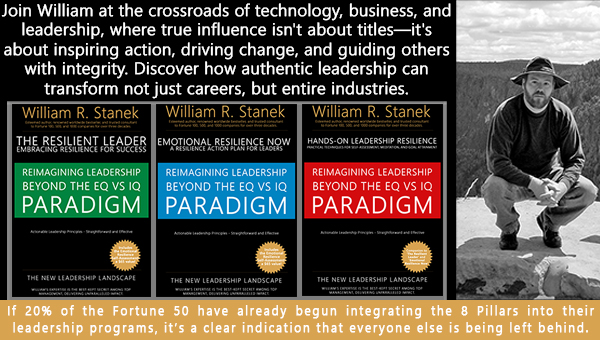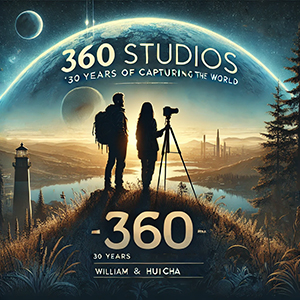
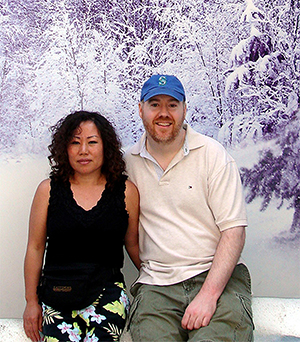 Photography Tips for Everyday Moments
Photography Tips for Everyday Moments
The most extraordinary beauty is often found in ordinary moments. In this series, William Stanek helps you see the world through a new lens, transforming everyday experiences into stunning photographic memories.

Transform your life with practical wisdom. Discover William Stanek's 'Living Well' series—your guide to a balanced and fulfilling life.
Discover William Stanek's Exclusive Art Collection
Explore and purchase the stunning art featured on this site. Own a piece of William Stanek's unique and captivating artwork today!
(April 26, 2025) Creative Use of Negative Space: Letting Your Subject Breathe
In photography, what you leave out of the frame can be just as important as what you include. Negative space, the empty or unoccupied areas around your subject, is a powerful tool for creating compelling compositions. By giving your subject room to breathe, you can emphasize its importance, create a sense of balance, and evoke emotion in the viewer. Whether you’re aiming for minimalism, emphasizing isolation, or simply enhancing the impact of your subject, mastering the use of negative space can transform your photography. Here, we’ll explore the creative potential of negative space, helping you to use it effectively to create more powerful and visually striking images.
Introduction: The Power of Negative Space in Photography
Negative space is the area around and between the main subjects of an image. While it might seem like empty or wasted space, negative space plays a crucial role in composition, providing balance, focus, and emotional depth. By deliberately incorporating negative space into your photographs, you can draw attention to your subject, create a sense of simplicity and elegance, and even evoke feelings of solitude or contemplation.
Negative space is a versatile tool that can be used in a variety of photographic styles, from minimalism to portraiture, landscapes to abstract art. Understanding how to use negative space effectively allows you to create images that are not only aesthetically pleasing but also rich in meaning and impact.
In this article, we’ll delve into the concept of negative space, offering tips on how to balance elements, embrace minimalism, and use negative space to emphasize isolation and focus.
Balancing Elements: How to Balance Your Subject with Negative Space
One of the key roles of negative space in photography is to create balance within the composition. By carefully positioning your subject within the frame and surrounding it with negative space, you can achieve a sense of harmony and visual stability that enhances the overall impact of the image.
Understanding Visual Weight: In any photograph, different elements carry different visual weights. A large, brightly colored subject, for example, will naturally draw more attention than a small, muted one. Negative space can be used to balance these visual weights, preventing the composition from feeling too heavy or cluttered. By placing your subject off-center and surrounding it with negative space, you allow the image to breathe, giving the viewer’s eye room to explore the entire frame without being overwhelmed.
Using the Rule of Thirds: The rule of thirds is a helpful guideline when incorporating negative space into your compositions. By dividing the frame into nine equal parts with two horizontal and two vertical lines, you can position your subject along these lines or at their intersections, leaving the remaining space as negative space. This creates a balanced composition that feels natural and pleasing to the eye. For example, placing a lone tree along the left third of the frame and leaving the rest as open sky creates a sense of openness and tranquility.
Creating Dynamic Balance: While balance is important, it doesn’t always mean symmetry. Dynamic balance involves placing your subject in a way that creates tension or movement within the frame, often by using negative space to lead the viewer’s eye through the image. For example, positioning your subject near the edge of the frame with a large area of negative space on the opposite side can create a sense of movement or anticipation, as if the subject is about to move into or out of the frame.
Pro Tip: Pay attention to the relationship between your subject and the negative space around it. The negative space should complement and enhance the subject, not compete with it. Experiment with different placements and amounts of negative space to see how it changes the overall feel of the composition.
Exercise: Choose a subject and practice balancing it with negative space in your compositions. Try different placements—centered, off-center, near the edge—and observe how the balance of the image changes. Reflect on how negative space can create harmony or tension and how it guides the viewer’s eye through the frame.
Minimalism in Photography: Stripping Down Your Composition to Its Essentials
Minimalism is a photographic style that embraces simplicity, focusing on the essential elements of a scene while stripping away the extraneous. Negative space is a central component of minimalist photography, allowing the few elements that remain to stand out and speak for themselves.
Embracing Simplicity: Minimalism is about distilling a scene down to its most essential elements, often focusing on a single subject with plenty of negative space around it. This simplicity creates a sense of calm and clarity, allowing the viewer to appreciate the subject without distractions. For example, a single blade of grass against a vast, empty sky or a lone figure walking on a deserted beach embodies the minimalist aesthetic, where less is truly more.
Choosing Your Subject Carefully: In minimalist photography, the subject is often isolated and given plenty of room to breathe. This places a greater emphasis on the subject’s shape, color, and texture, making every detail more significant. Choose subjects that are visually interesting on their own, whether it’s a striking silhouette, a bold color, or an unusual texture. The negative space around the subject should enhance these qualities, drawing attention to the subject’s simplicity and beauty.
Using Negative Space as a Canvas: In minimalism, negative space isn’t just empty—it’s an active part of the composition, like a blank canvas that highlights the subject. Consider how the color, texture, or tone of the negative space interacts with the subject. A stark white background, for example, can make a dark object appear more dramatic, while a soft gradient of color can add subtlety and depth. The negative space should feel intentional, contributing to the overall mood and impact of the image.
Pro Tip: In minimalist photography, less is more. Avoid cluttering the frame with unnecessary elements, and focus on creating a clean, simple composition that emphasizes the subject. Use negative space to create a sense of openness and clarity, allowing the viewer to focus on what’s most important.
Exercise: Create a series of minimalist photos using negative space as a central element. Choose simple, striking subjects and compose them with plenty of negative space around them. Experiment with different backgrounds and levels of simplicity, and reflect on how negative space enhances the minimalist aesthetic.
Emphasizing Isolation: Using Negative Space to Convey Solitude or Focus
Negative space is a powerful tool for conveying emotions, particularly feelings of isolation, solitude, or focus. By surrounding your subject with empty space, you can create a sense of loneliness, contemplation, or concentration that resonates with the viewer.
Creating a Sense of Solitude: When a subject is isolated within a large area of negative space, it can evoke feelings of loneliness or introspection. The emptiness around the subject emphasizes its separation from the rest of the world, creating a mood of quiet contemplation. For example, a single boat on an expansive ocean or a lone figure in a vast desert landscape uses negative space to convey solitude and the vastness of the environment.
Focusing the Viewer’s Attention: Negative space can also be used to draw the viewer’s attention directly to the subject, creating a strong focal point. By eliminating distractions and simplifying the composition, negative space directs the viewer’s gaze to the subject, allowing them to focus entirely on its details and nuances. This is particularly effective in portraiture, where a simple background of negative space can make the subject’s expression, posture, or gaze more powerful and intimate.
Playing with Scale: Using negative space can also play with the perception of scale, making the subject appear smaller or more vulnerable within the vastness of the frame. This can add drama and emotional depth to the image, as the viewer contemplates the relationship between the subject and its surroundings. For example, a small bird perched on a lone branch against a wide, empty sky can evoke a sense of fragility or isolation.
Pro Tip: When using negative space to convey isolation or focus, consider the emotion you want to evoke in the viewer. The amount of negative space, the placement of the subject, and the tone or color of the background all contribute to the mood of the image. Use these elements intentionally to create the desired emotional impact.
Exercise: Create a series of photos that use negative space to convey feelings of isolation, solitude, or focus. Experiment with different subjects, backgrounds, and compositions to see how negative space influences the mood of the image. Reflect on how the sense of emptiness or openness around the subject affects the viewer’s perception and emotional response.
Mastering the Creative Use of Negative Space
Negative space is a versatile and powerful tool in photography, offering endless possibilities for creative expression. By mastering the use of negative space, you can create images that are not only visually striking but also rich in meaning and emotion. Whether you’re aiming for balance, simplicity, or a strong emotional impact, negative space can help you achieve your artistic vision.
Negative Space as a Creative Choice: Remember that negative space is a creative choice—it’s about what you choose to leave out as much as what you include. By being intentional with negative space, you can guide the viewer’s eye, create mood and atmosphere, and elevate your subject to new levels of significance.
Pro Tip: Don’t be afraid to experiment with different amounts and types of negative space. Try using large expanses of empty space, tight compositions with minimal negative space, or even unconventional placements of negative space within the frame. The more you explore, the more you’ll discover the creative potential of this powerful compositional tool.
Exercise: Challenge yourself to create a portfolio of images that showcase the creative use of negative space. Focus on different approaches, such as balancing elements, embracing minimalism, and conveying emotions through isolation. Reflect on how negative space transforms your compositions and how it enhances your ability to communicate visually through photography.
Conclusion: Letting Your Subject Breathe Through Negative Space
Negative space is more than just the empty areas around your subject—it’s a vital component of composition that can transform your photography. By letting your subject breathe and using negative space creatively, you can create images that are balanced, impactful, and emotionally resonant.
As you continue to explore the creative use of negative space, remember that it’s not about filling the frame—it’s about finding the right balance between subject and space, creating compositions that are both powerful and meaningful.
Share your creative use of negative space with us on Instagram using #NegativeSpacePhotography. We’re excited to see how you’re letting your subjects breathe and creating compelling images with the power of empty space.
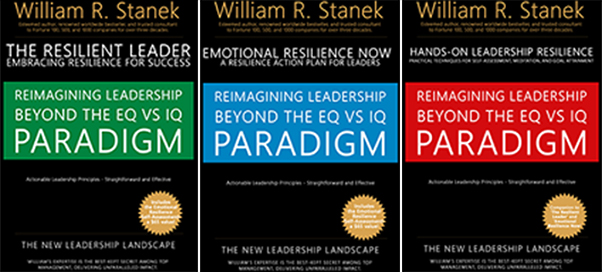
Join William at the crossroads of technology, business, and leadership, where true influence isn't about titles - it's about inspiring action, driving change, and guiding others with integrity. Discover how authentic leadership can transform not just careers, but entire industries.
Bring Inspiration Home
Enhance your space with William Stanek's evocative art. Each piece is crafted to inspire and uplift your everyday life.
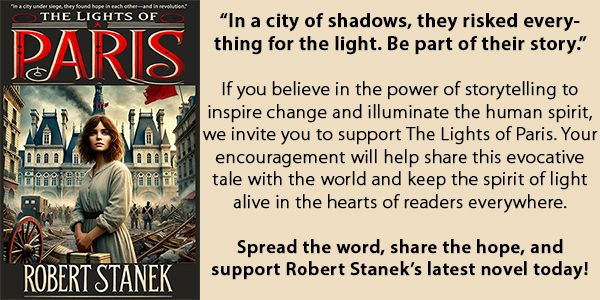
Support The Lights of Paris by Robert Stanek, William Stanek's pen name! Through vivid historical detail and deeply moving character stories, Robert takes readers on an unforgettable journey through one of history’s most transformative times.
